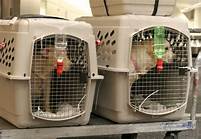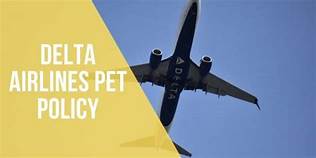Are Pets Allowed on Planes?
Traveling with a pet can be a stressful experience, especially if you are flying. Most airlines allow pets on their flights, but there are some restrictions that you need to be aware of. In this article, we will discuss the rules and regulations for flying with a pet, as well as some tips for making the experience as smooth as possible.

Restrictions on Pets
The first thing you need to do is check with the airline that you are flying with to see if they allow pets. Some airlines do not allow pets at all, while others have restrictions on the size and type of pet that you can bring. Generally, small dogs and cats are allowed in the cabin, while larger animals must travel in the cargo hold.
There are a few other things to keep in mind when flying with a pet:
- Your pet must be at least 8 weeks old.
- Your pet must be up-to-date on their vaccinations.
- Your pet must be healthy and able to travel.
- You must have a health certificate from your veterinarian.
Preparing Your Pet for Travel
Once you have confirmed that your pet is allowed to fly, you need to start preparing them for the trip. This includes:
- Getting your pet used to their carrier.
- Training your pet to stay calm in the carrier.
- Feeding your pet a light meal before the flight.
- Giving your pet plenty of water before the flight.
Traveling with Your Pet
On the day of the flight, arrive at the airport early to give yourself plenty of time to check in and go through security. Make sure that you have all of your pet's documents with you, including their health certificate and vaccination records.
When you board the plane, your pet will be placed in a carrier under your seat or in the cargo hold. If your pet is traveling in the cabin, you will be allowed to visit them during the flight. If your pet is traveling in the cargo hold, you will not be able to see them until you arrive at your destination.
Tips for Making the Experience Smooth
Here are a few tips for making the experience of flying with a pet as smooth as possible:
- Choose a non-stop flight if possible.
- Avoid flying during peak travel times.
- Make sure that your pet's carrier is comfortable and secure.
- Bring plenty of food and water for your pet.
- Give your pet a sedative if they are anxious about flying.
By following these tips, you can help to ensure that your pet has a safe and comfortable flight.
Declaration: All article resources on this website, unless otherwise specified or labeled, are collected from online resources. If the content on this website infringes on the legitimate rights and interests of the original author, you can contact this website to delete it.




